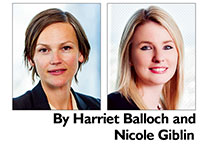 Educational establishments work hard to build reputations as trusted and leading education providers within local communities and globally. Investing in trademark protection can ensure that exclusive rights are secured in the name and logo of the educational establishment at a country level and internationally, by filing for protection on a country-by-country or regional basis. Globalisation of education providers As part of these arrangements, establishments usually enter into licensing agreements with local partners, authorising the use of the school’s intellectual property rights, including the name and logo of the school, together with the curriculum, teaching materials and the school uniform. Some of these assets can be protected through IP rights, such as trademarks, copyright and registered design rights. Given that the right to use the name and logo of a school will be core to any licensing deal, it is key to ensure that adequate trademark protection is secured in advance of entering into licensing agreements. As part of this protection strategy, it is important to consider whether local language variations, such as Arabic or Mandarin versions of the trademark, need to be protected. Why secure trademark protection? Accordingly, a trademark registration can prevent competing schools, nurseries or universities from using the same or a similar trademark. Trademark protection also enables establishments to develop their brands, by attracting investors or generating alternative revenue streams, through licensing arrangements in new markets. Trademark searches Trademark clearance searches should be undertaken prior to the launch of a new brand and before expanding that brand into other markets. Conducting searches can quickly reveal whether the relevant trademark is free to use or whether use of the mark will infringe the prior rights of a third party. Given that significant time and money is invested in branding exercises, undertaking clearance searches early can avoid unnecessary costs being incurred in connection with a forced re-brand. The application process All goods and services are categorised into 45 ‘classes’. Educational establishments usually look to secure protection in the following core classes:
Universities and other higher educational establishments may also wish to protect their trademarks in relation to Class 42, which covers research and development services. Any establishments which are considering opening campuses in new markets should secure protection for their trademarks before entering into discussions with potential local partners. Adopting this approach will ensure that they are in a position to license the use of the school’s trademark in that country. If you have any questions about securing trademark protection, please contact our IP team at IP@clydeco.ae. |
Clyde & Co LLP
PO Box 7001, Rolex Tower,
Sheikh Zayed Road, Dubai
United Arab Emirates
Tel: (971) 4 384 4000
Fax: (971) 4 384 4004
Email: harriet.balloch@clydeco.com
nicole.giblin@clydeco.ae
www.clydeco.com

